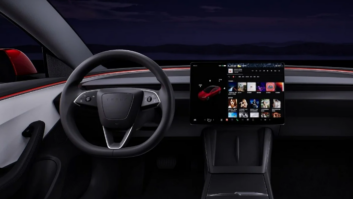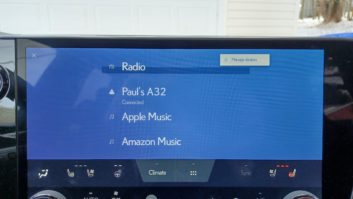Gracenote found a way for car audio systems to automatically adjust EQ settings by the individual song being played.

Gracenote Dynamic EQ technology uses the company’s music-fingerprint technology and an embedded database to ID a song from any source and pull an EQ profile. Sources include CDs, cloud services, FM, satellite radio, and connected smartphones.
The technology is the first of its kind to automatically adjust EQ settings at the track level to optimize playback quality as a playlist switches from rap to pop vocals or users change radio stations or sources, the company said.
Most drivers “typically leave their car audio systems in the same settings as they bounce from artist to artist and genre to genre,” Gracenote said. “The result is a music experience that often lacks the depth and impact of the original studio recordings.”
Gracenote will initially target automakers and their OEM suppliers, but it is also looking at aftermarket car audio suppliers. “Given the controlled environment, we decided to initially focus on [the automotive market], but you can see how it can be applied to home theater, including TVs and speakers,” a spokesman added.
To change EQ settings automatically, Gracenote created Dynamic EQ profiles with optimum EQ settings for tens of millions of songs, the company said.
To create the technology, Gracenote developed an algorithm that analyzes individual recordings and extracts acoustic profiles for each song. The profiles include levels of bass, treble and midrange. The data is combined with such information as genre, era and mood, already collected by the company for millions of songs, to create a Dynamic EQ profile for each song. The profiles can be stored in the in-vehicle database and matched to a specific song as it is matched to its acoustic fingerprint, which can also be stored in the database.
The embedded database “will suffice in most cases, but there is an option to go online to do real-time audio fingerprinting if it’s not listed in the embedded database — offline for queries in the embedded database and online for real-time fingerprinting if it’s not listed,” the spokesman added.
The technology will be available to automakers by the third quarter of 2016 for use in 2018-model-year vehicles. “There is a possibility that you might see it in the aftermarket before model-year 2018 cars,” the spokesman added. The technology will launch with around 50 million to 60 million EQ profiles.
Gracenote’s music-recognition technologies are already used in vehicles to identify songs in real-time to display such metadata as artist name, album information and cover art on a dashboard.












